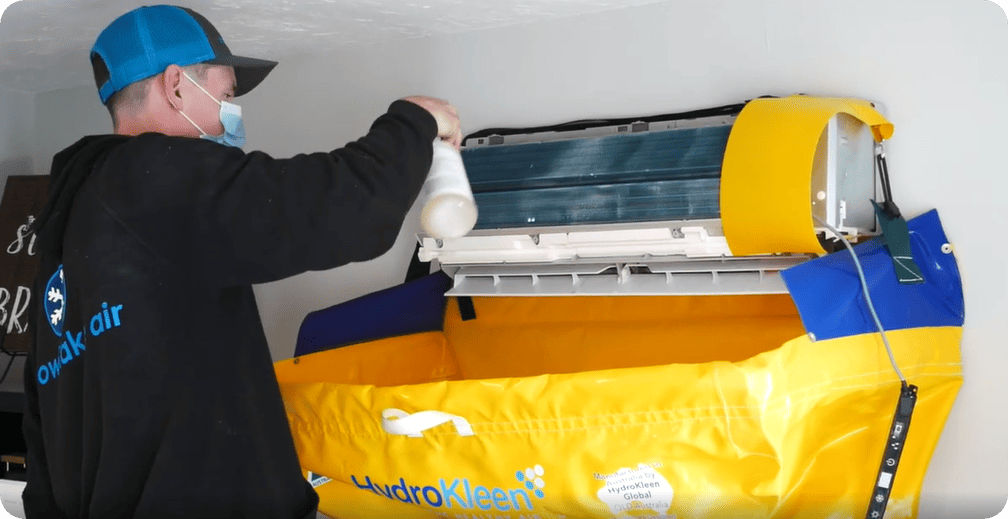Troubleshooting Guide: Why Is My Mini Split Not Getting Cold
Troubleshooting Guide: Why Is My Mini Split Not Getting Cold?
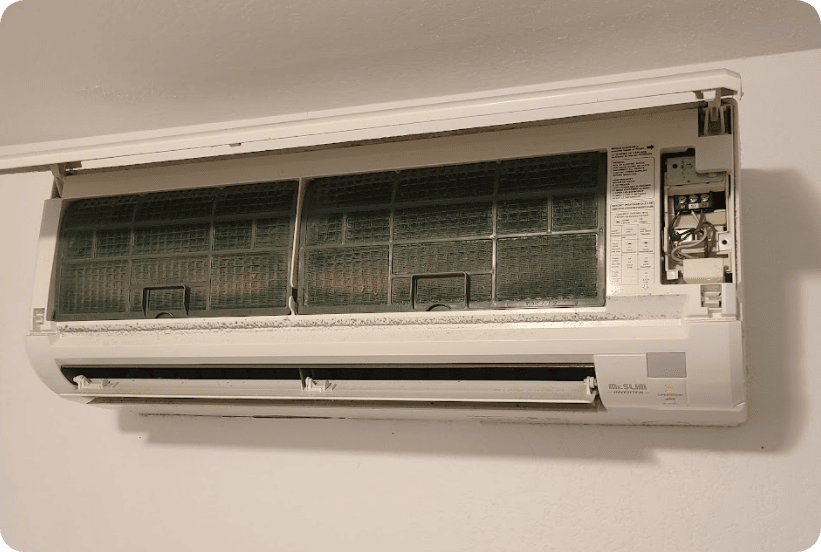 The most common reasons for a mini split to not blow cold air in the summertime are the wrong thermostat settings, a refrigerant leak, or a clogged condenser coil. Each of these problems requires very different solutions — and costs. Proper maintenance prevents most of them.
The most common reasons for a mini split to not blow cold air in the summertime are the wrong thermostat settings, a refrigerant leak, or a clogged condenser coil. Each of these problems requires very different solutions — and costs. Proper maintenance prevents most of them.
Your mini split should keep your home at a constant temperature no matter how hot it gets outside. But, if something’s wrong with it, the air coming through the air handlers may not feel cool. Or, there’s no circulation at all.
The good news is that there’s no need to panic. If you follow our troubleshooting guide, you may be able to fix it yourself! Or, you can start with a low-cost solution that often solves the problem.
HydroKleen208 specializes in deep cleanings for mini splits and heat pumps. Our cleanings can make a massive improvement in your mini split’s performance and the overall comfort in your home, But it’s a separate service from what you’ll get from regular HVAC service.
We’ll talk more about these services and how they differ later on. For now, we partner with Snowflake Air in Boise Metro and Valley County and recommend them for any mini split repair or service needs.
When it comes to cleaning, however, we’ve got you covered.
How Does A Mini Split Transfer Heat?
Your air handlers draw in warm air from your home in the summer. The air passes over a coil, which removes heat from the air and moves it to a refrigerant liquid in the system. That liquid absorbs the heat and runs to the heat pump, which transfers the heat to the air outside. Back inside, the air handler recirculates the now-cooled air.
The system works in reverse in the winter: Your heat pump draws heat from outside. That heat warms the refrigerant, which travels to the air handlers carrying the heat.
Now that you know how it works, let’s see what can go wrong.
Four Reasons Your Mini Split Won’t Blow Cold Air
The three most common reasons your mini split runs but doesn’t blow cold air are:
- Wrong Thermostat Settings
- Clogged Air Filter
- Refrigerant Leak
- Clogged Condenser Coil
Wrong Thermostat Settings
Leaving your system on a winter thermostat setting, or using the wrong features, can result in no air coming through the air handlers. Or warm air when you want cooling.
Related: My Mini-Split Won’t Turn On. What’s Wrong? How Do I Fix It?
What To Do
Ensure each air handler’s thermostat is set to “Cool” and “Auto.” If it’s still on “Heat, or if the temperature is set too high, you won’t get any cooling. Meanwhile, “Fan Mode” circulates the air without heating or cooling it.Clogged Air Filter
The air filter in each air handler catches dust and dirt from the air as it enters your unit. When that filter gets too full, it won’t allow the air to pass through. When warm air doesn’t pass all the way through the system, it doesn’t get cooled.What To Do
Clean your air filters once a month whenever your mini split is running. And, every three months when it’s not. If the filter is visibly clogged or very dirty, it’s been too long between cleanings.Refrigerant Leak
If there’s a refrigerant leak, then there’s nothing moving the heat out of your air handler. Warm air enters the system, doesn’t get cooled, and recirculates at the same temperature. Related: The Signs (And Risks) Of A Mini Split That’s Not Installed ProperlyWhat To Do
Call your HVAC company if you notice a hissing sound or chemical smell near your heat pump or air handlers. You won’t see any refrigerant because it will be warm and in gas form.Clogged Condenser Coil
The condenser coil is the part in the air handler that draws the heat from the air as it passes through the unit. But, the coil can get clogged with tiny particles that make it past the filter. Mold and bacteria buildup are also very common. These contaminants prevent air from passing over the coil, which means there’s no way to remove the heat from it. Once again, the result is the air recirculating without any cooling.What To Do
If you’ve never had your mini split cleaned before, start there. It’s a different service than a repair, and often cheaper. And, since a dirty system also causes other problems, which we’ll talk about in a moment, the cleaning also addresses those other issues. If you’ve checked the filter and thermostat, and there aren’t any signs of leaks or other problems, start with a cleaning.Why Mini Split And Heat Pump Cleanings Are Important
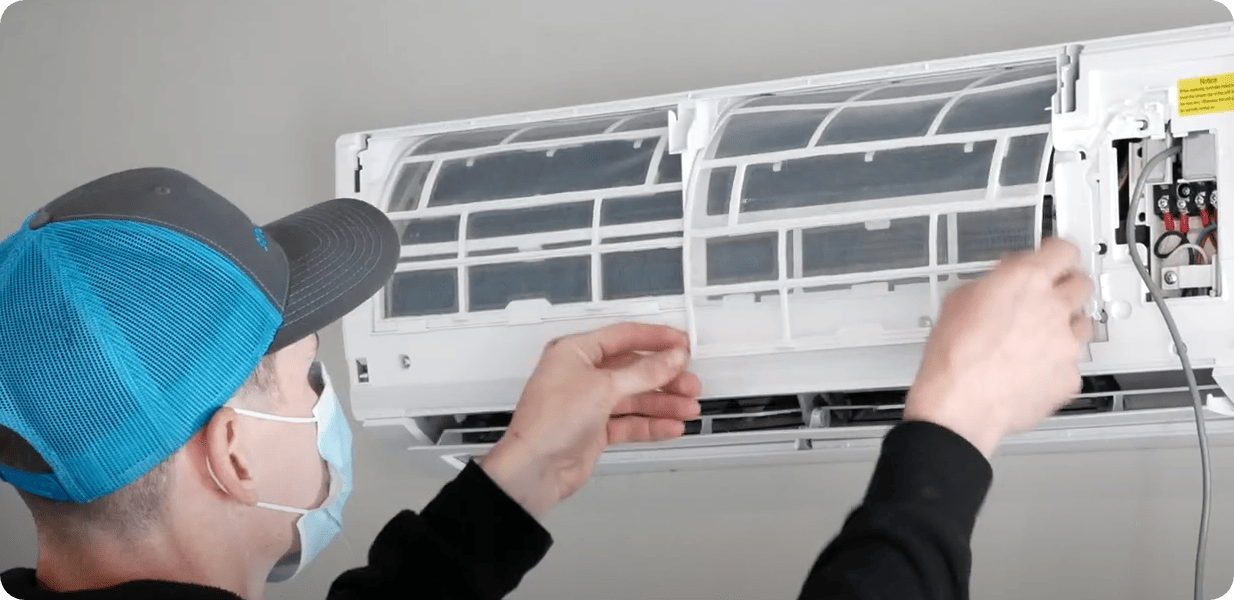 Mini splits are more prone to organic buildup than conventional systems. The inside of an air handler is dark and warm. There’s also moisture in there from the air, especially around the coil. That makes the equipment a perfect breeding ground for mold and other contaminants.
Mini splits are more prone to organic buildup than conventional systems. The inside of an air handler is dark and warm. There’s also moisture in there from the air, especially around the coil. That makes the equipment a perfect breeding ground for mold and other contaminants.
As we’ve seen already, this results in a clogged coil that prevents heat transfer. It also leads to higher electric bills: Your system requires more power as it struggles to overcome these impediments.
Eventually, you’ll notice other problems, including breakdowns, due to the excess stress and wear and tear to your system.
Related: How Can I Make My Mini Split Last Longer?
Meanwhile, the air handler spreads those tiny pollutants, including mold spores and bacteria, out into the air you breathe in your home.
Mini Split Cleaning Vs. A Tune-Up
Cleanings are a different service than a mini split tune-up or seasonal maintenance. A tech checks dozens of inspection points during a tune-up. And while they’ll do some cleaning, it’s not nearly as comprehensive as a separate service.
Until recently, a tech would have to take apart your heat pump and air handler and then carefully, manually, clean each part. That includes scrubbing in between each tiny, delicate fin on every condenser coil.
It would take hours, meaning you’d get a huge bill. And it may not even be that effective. So, most companies don’t offer this service. That’s where HydroKleen208 comes in.
We use customized equipment that flushes out virtually all the dust, dirt, pollen, mold spores, and other microbial contaminants in your air handlers and heat pump.
Our pressure washers are perfectly calibrated to do the job without damaging anything. And, our cleaning agents are 100-percent environmentally friendly and won’t introduce toxic chemicals to your home.
The result? A mini split that’s just as clean as the day you bought it and works like new as well.
To see what we mean, check out this coil. We started cleaning one side, then took a picture before continuing.
You can see how dirty they can get and how clean they are once we’re done:
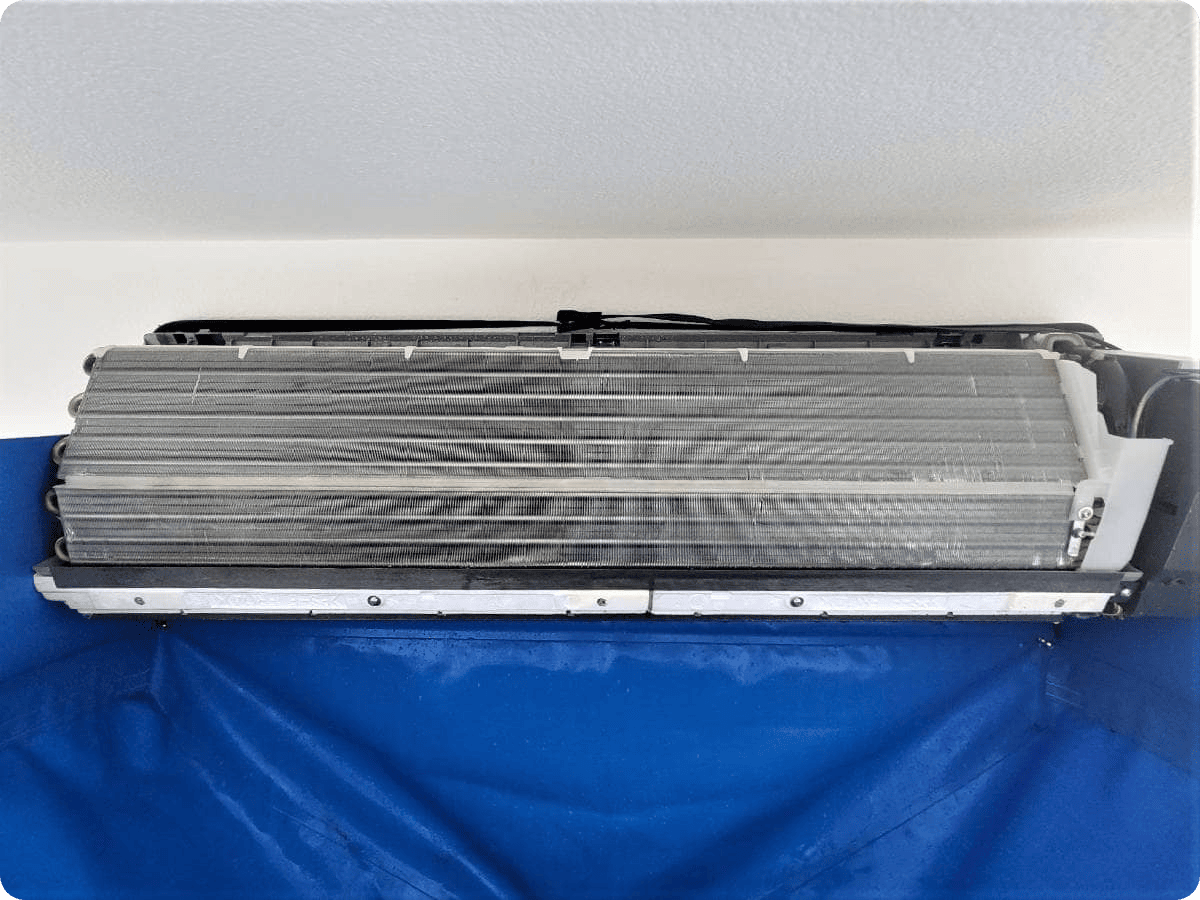
And, if you’ve never had a cleaning, your coil almost certainly looks like the untreated part of that photo. Fortunately, our process is fast, easy, and inexpensive.
Related: What Does It Cost To Clean A Heat Pump?
Heat Pump Cleaning In Donnelley, ID
HydroKleen208 brings more than a decade of international research and development to mini split and heat pump cleaning to Donnelly, ID, as far north as Cascade and as far south as Kuna. To learn more or schedule a visit, click below or call us at (208) 779-5596.

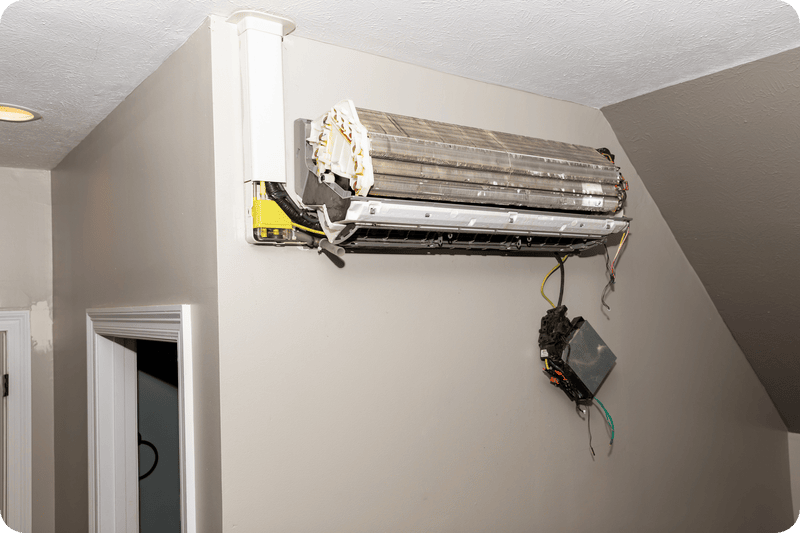
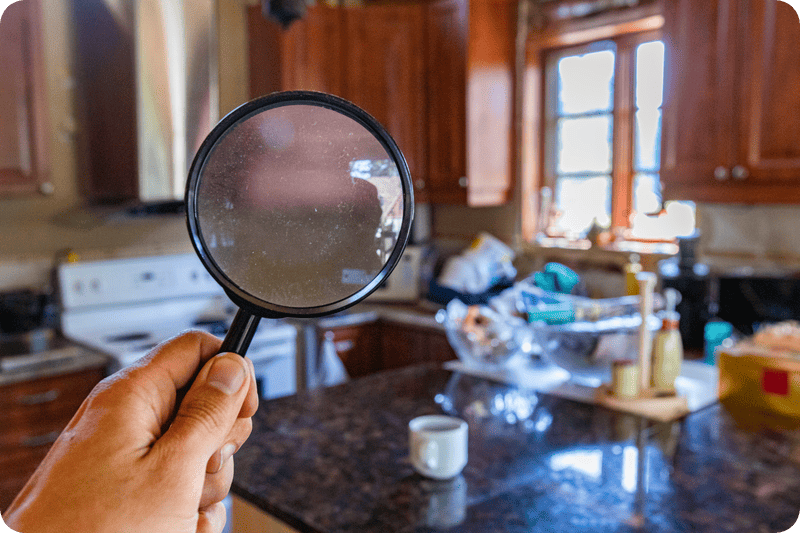
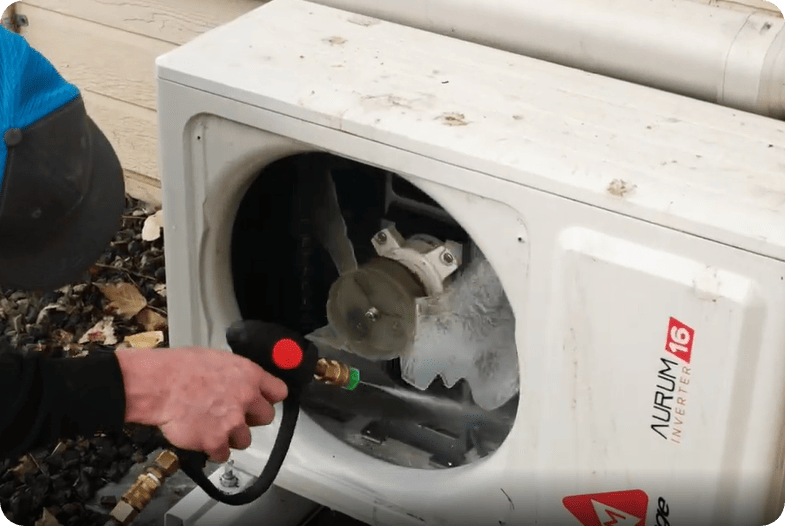 The condensate drain line on your mini split gets rid of water that would otherwise build up in your mini split system. Your air handlers dehumidify a room as part of the cooling process, and when the moisture in the air condenses back into a liquid, it has to go somewhere.
The condensate drain line on your mini split gets rid of water that would otherwise build up in your mini split system. Your air handlers dehumidify a room as part of the cooling process, and when the moisture in the air condenses back into a liquid, it has to go somewhere.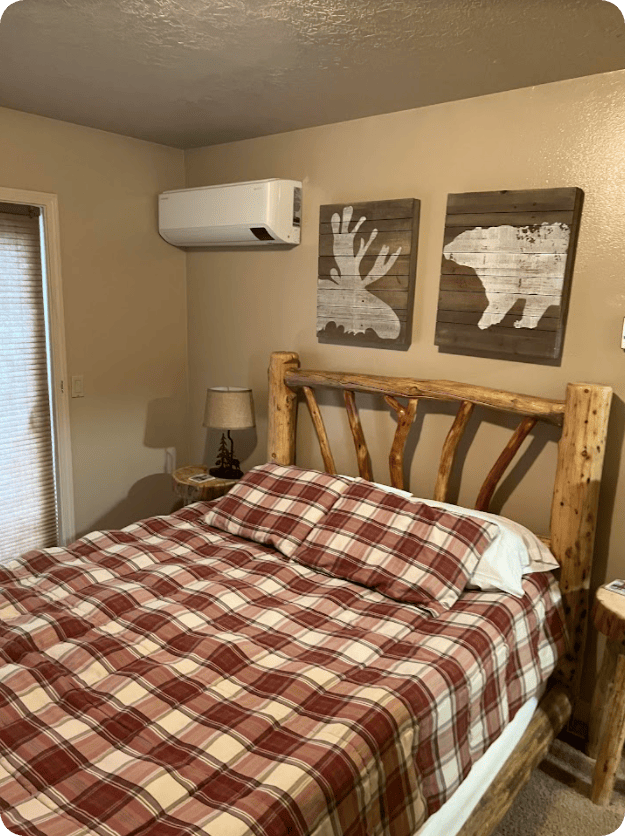 There’s no need to panic if your mini split system suddenly won’t turn on. There’s a quick, simple fix for the problem in many cases. Sometimes, you can even handle it yourself!
There’s no need to panic if your mini split system suddenly won’t turn on. There’s a quick, simple fix for the problem in many cases. Sometimes, you can even handle it yourself!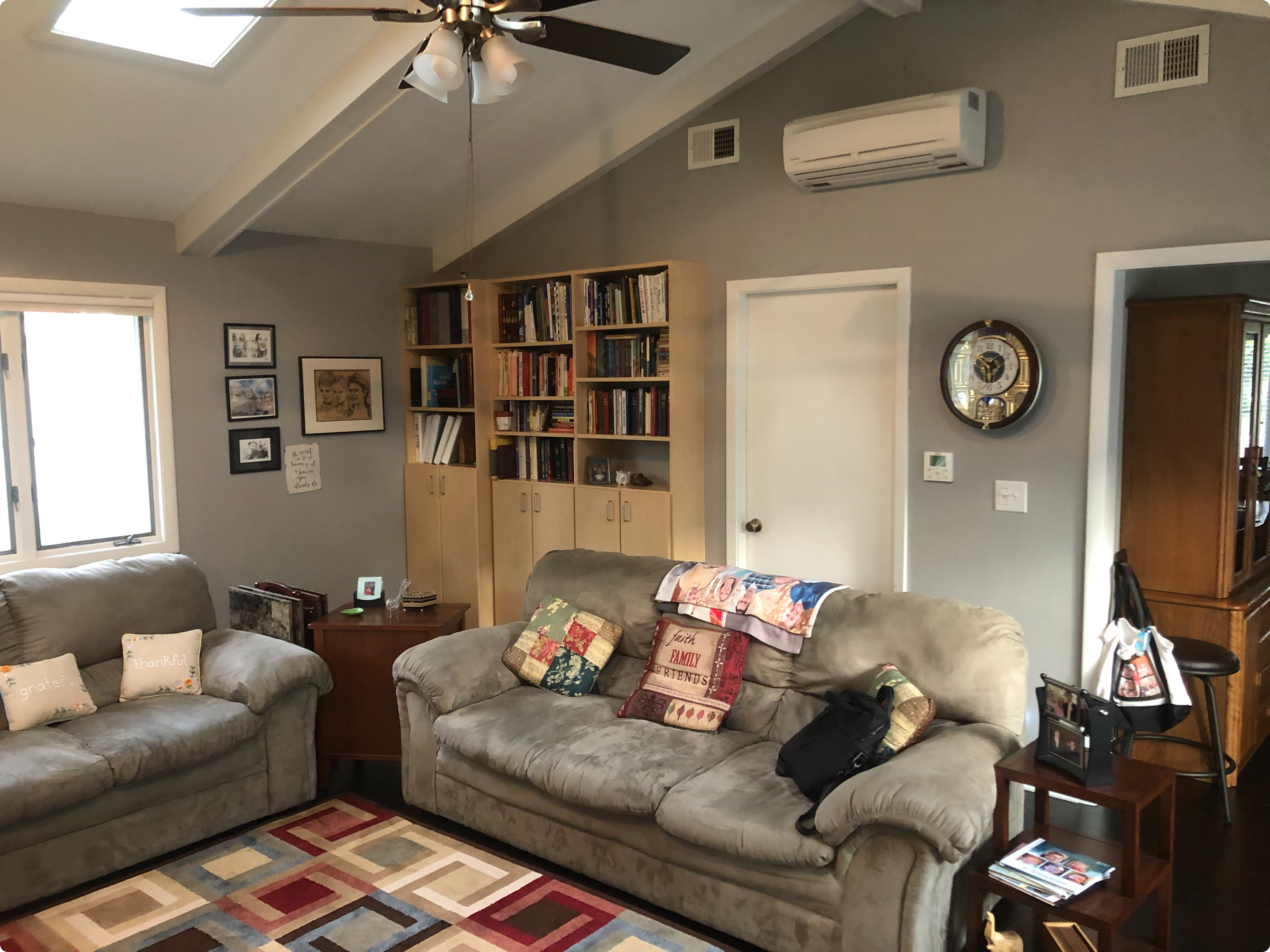 Your nose knows! A funky smell coming from your mini split is a sign of a problem. Depending on the odor, it could be anything from an electrical issue to mold infestation to a problem outside your home.
Your nose knows! A funky smell coming from your mini split is a sign of a problem. Depending on the odor, it could be anything from an electrical issue to mold infestation to a problem outside your home.